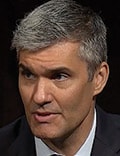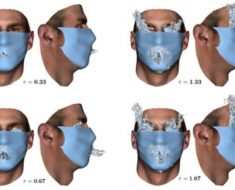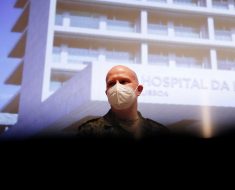
Dr Charles Wykoff
SAN FRANCISCO — The latest trial of a novel investigative drug for exudative retinal disease has shown the treatment has the potential to improve vision and anatomical markers in eyes with nonproliferative diabetic retinopathy (NPDR). As a result, the drug candidate is now back on the development track after the sponsor announced over the summer it would hit pause.
“KSI-301, or tarcocimab, now has been studied in six phase 3 clinical trials, and three have met their primary endpoint and three have not,” said Charles Wykoff, MD, PhD, director of research at Retina Consultants of Texas and deputy chair of ophthalmology at the Blanton Eye Institute of Houston Methodist Hospital.
Wykoff presented findings of the GLOW trial at the 2023 annual scientific meeting of the American Academy of Ophthalmology.
“One of the consistent things we’ve seen across the studies, even in the ones that failed to meet their primary endpoint, is a signal of improved durability with this agent that is specifically designed to have a long intraocular half-life,” Wykoff added. “There is a potential role for that in the clinical management of patients with exudative retinal diseases.”
Study sponsor Kodiak Sciences said it would restart the development program because of the GLOW results. The company discontinued the program over the summer after disappointing results from the GLEAM and GLIMMER phase 3 trials in diabetic macular edema (DME), which failed to meet their primary endpoint of noninferiority to aflibercept.
GLOW Trial Design
In the GLOW trial, 253 patients with NPDR were randomized to receive tarcocimab or sham treatment. The tarcocimab group received four injections of the drug, in 5-mg doses, in the first year. The primary endpoint was number of eyes improving two or more steps in the Diabetic Retinopathy Severity Scale (DRSS) score, with key secondary endpoints being the proportion of eyes developing sight-threatening complications and improvement of three or more steps in the DRSS score from baseline.
Average patient age was approximately 57 years in both groups, and other demographic factors were also similar, although 10.2% of the tarcocimab group and 18.4% of the sham group were Black. A1c was similar in both groups, at 8.3% and 8.5%, respectively, according to the researchers.
“This is the first time we’re seeing data in eyes with NPDR but without diabetic macular edema,” Wykoff said.
What makes tarcocimab unique, Wykoff said, is that it carries a core antibody similar to aflibercept with a strong anti-vascular endothelial growth factor (VEGF) effect linked to a high-molecular-weight biopolymer that stabilizes the antibody and increases its durability inside the eye. In effect, it can deliver about 3.5 times more active ingredient to the eye than 2 mg of aflibercept.
Trial Results
In the GLOW trial, 29 times more patients taking tarcocimab achieved the primary endpoint, at 41.1% versus 1.4% for sham (P < .0001), said Wykoff. In addition, 5.6% of treated patients versus none of the sham patients showed more than a three-step improvement in DRSS from baseline at week 48 (P < .0058).
Patients treated with tarcocimab also had less worsening of diabetic retinopathy: 0.7% had greater than a two-step worsening in DRSS at 48 weeks versus 3.9% of sham patients. None had a greater than three-step worsening versus 2.3% of the sham group. And 70% of patients taking the drug had at least a one-step improvement in DRSS at week 48 versus 10% of the sham group, Wykoff said.
“Distribution of DRSS changes was very consistent, showing a shift toward improvement and less worsening with tarcocimab,” he said. “The development of sight-threatening complications was reduced 90% with tarcocimab. Any sight-threatening was 21% in the sham group versus 2.3% in the tarcocimab arm, which is consistent with previous studies looking at the NPDR population.”
However, Wykoff acknowledged a “meaningful imbalance” in the rate of cataract in treated patients compared with sham, at 11.4% versus 4%.
“The reasons for why we’re seeing that adverse event is still incompletely understood,” Wykoff said. “This was not seen in the wet age-related macular degeneration study, in which patients were treated monthly.” The rate of cataract development was consistent with the GLEAM and GLIMMER trials in DME, Wykoff said. Ongoing research is attempting to tease that out.

Dr Paolo Lanzetta
Paolo Lanzetta, MD, a professor at the University of Udine in Italy, said cataract formation is “relatively common” in patients with diabetic retinopathy “and does not represent a specific concern, although it may be associated to a higher risk of postoperative macular edema.”
The bigger issue may be the need for anti-VEGF treatment for NPDR, he said.
“The major question today is related to whether or not anti-VEGF treatment of eyes with NPDR in the absence of center-involved macular edema is justified,” Lanzetta said. “Obviously, reducing the frequency of treatment is a relevant measure for lowering both burden and costs.”
Modifying risk factors such as A1c and blood pressure have been shown to control diabetic retinopathy progression, macular edema, and retinal neovascularization, and older age is protective against worsening of retinopathy, Lanzetta said.
Several clinical trials have raised questions about the necessity of anti-VEGF treatments for NPDR, Lanzetta said. Until the cost-benefit analysis of treating NPDR without macular edema is clear, “clinicians should consider anti-VEGF treatment on a case-by-case basis with careful selection,” he said.
The study was funded by Kodiak Sciences. Wykoff has reported being a consultant for Kodiak Sciences, Genentech/Roche, Novartis, and Regeneron Pharmaceuticals. Lanzetta has reported being a consultant for AbbVie, Aerie, Apellis Pharmaceuticals, Bayer, Biogen, Boehringer Ingelheim, Genentech /Roche , Novartis, Ocular Therapeutix, and Outlook Therapeutics.
2023 annual meeting of the American Academy of Ophthalmology. Presented November 3, 2023.
Richard Mark Kirkner is a medical journalist based in the Philadelphia area.
Source: Read Full Article





